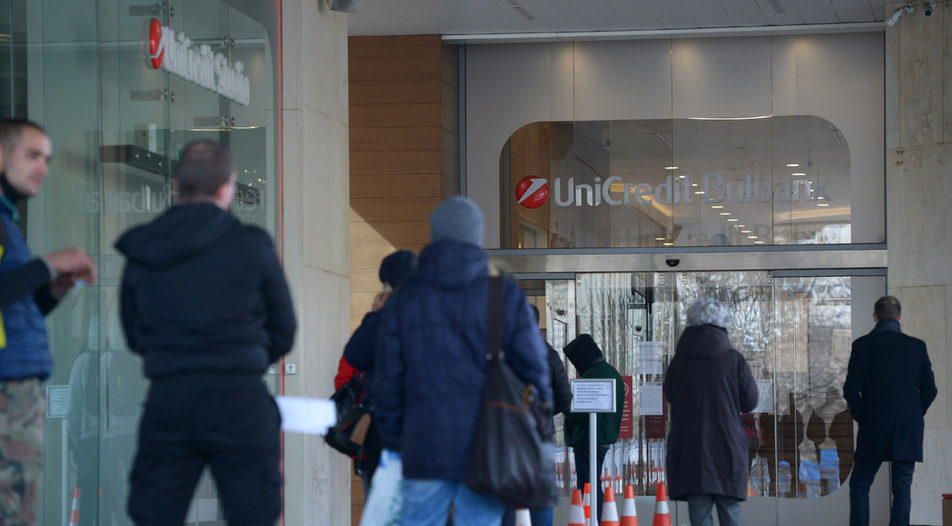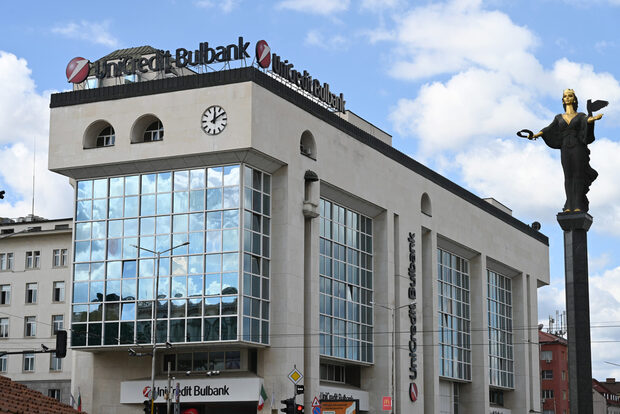Bulgarian banks had been preparing for a recession since 2019 as many signs in the global economy pointed towards a slowdown. However, nobody imagined that it would come amidst a pandemic requiring people and businesses to stay idle for long periods of time - an occurrence that could easily cause a surge in bad loans, credit freezes, and market crashes.
The good news is that the worst-case scenarios were avoided (or, at the very least, delayed) through various levers pulled by governments and central banks. The surge in the unemployment rate was softened by government support nets, and debtors were allowed to take advantage of credit repayment moratoriums. There were also regulatory concessions that allowed banks to temporarily improve their capital ratios by not immediately setting aside significant provisions. Thus, despite the crisis in the real economy, the financial sector came out of 2020 relatively unscathed.
Loss of appetite for risk
In 2021, preparation will be key. In general, banks lost part of their risk appetite in 2020, and credit conditions tightened. The volume of credit continued to increase in all segments (after a brief freeze in April and May of 2020) but the growth rate decreased. Only mortgage loans continued to grow in the double digits but they are largely covered and considered lower-risk assets.
Preventive provisioning for future losses doubled the cost of impairments. As a result, profits in 2020 were half of what the banking sector achieved in 2019.
However, the levels of provisioning and the drop in profits varied. Some banks opted for riskier behavior in an attempt to grow more aggressively. It is also difficult to say to what extent each bank has covered its risks with provisions. This will start to show only with the expiration of the credit moratorium in the first half of this year. Thus, banks that reported larger declines in profits or even losses for last year may find themselves in a better position in 2021.
Bulgaria's entry into ERM II and the EU's Banking Union in mid-2020 as part of preparations for adopting the euro was also a positive development for the sector, mostly in terms of foreign perceptions of the local economy. Most of the positives were consumed in advance through the reforms implemented during the accession procedure itself. Others have not yet materialized, as many of the reforms set on paper face difficulties and resistance in practice, and the actual adoption of the euro, which would bring direct access to liquidity from the ECB, has not yet taken place, neither has a specific date been set for it. Yet, the entry into ERM II and the Banking Union was the reason why Fitch, Moody's, and S&P did not lower Bulgaria's credit ratings despite deteriorating macroeconomic prospects.
Navigating through the crisis of 2020 was easier for banks compared to the crisis of 2008-2009 because of lower interest rates on borrowed resources, cleared-up balance sheets, and more balanced ratios of credit volumes to deposits. However, there is a lot of specificity to each bank's risk that cannot be covered through these indicators. The quality of their customers' business models and collateral varies which means that the growth of bad loans may be uneven among banks. The capacity to manage bad loans also varies.
The positivity
The pandemic year of 2020 ended largely on a positive note for banks in terms of both capital indicators and liquidity.
So far, the crisis has not reversed the decline in interest rates which hit historic lows on both credit and deposit segments. However, the Bulgarian National Bank (BNB) already expects a slight increase in lending rates in the second half of the year. Central banks have indicated that they will continue their expansionary policies which means that significant increases in the price of credit cannot be expected in the local market.
Most of the local banks' deposit interest rates hovered around 0.5% of the volume of funds borrowed in 2020. Traditionally, banks with a strong parent abroad (UniCredit Bulbank or DSK Bank, for example) were able to bring the price even lower.
In the case of loans, a higher interest rate is associated with a greater risk. In a deep and relatively short crisis, more substantial problems can come from expensive consumer loans with little to no collateral. The highest price of credit in 2020 was charged by TBI Bank which extended loans to households at 26.16% interest. At the other end was ProCredit Bank, where households could get a loan for 3.45%.
Usually, a high percentage of borrowing coming from the government sector would be considered a cause for concern. However, currently the economy is driven largely by government stimulus programs, and lending to state-owned firms seems to bring stability. But in the longer term, if the pandemic worsens, and public finances alongside it, some banks may face difficulties. For example, in Municipal Bank the percentage is over 37%, in D Commerce Bank - 10%, and in Investbank - 9.26%.
The percentage of tangible and unprofitable assets can also be used as an indicator of the quality of balance sheets. These include physical branches and headquarters but also assets acquired as collateral for non-performing loans. Eight local banks have kept their ratios below 3%. At the other end are Investbank with 17.47%, followed by Fibank with 13.44% and Tokuda Bank with 10.68%. The high levels are indicative of residual risk leftover from the previous crisis in the form of unprofitable properties that are difficult to liquidate, and selling them may necessitate reporting a loss.
The ratio of capital to assets is the closest an analyst can get to the classic measures of capital adequacy. Most banks are in the double digits in this regard. Because higher values indicate more buffers, this gives some peace of mind. TBI Bank is in the lead with a 22.06% capital-to-assets ratio, followed by DSK Bank (15.47%) and Eurobank Bulgaria (Postbank) with 13.28%. At the other end is Municipal Bank with 5.57%.
These indicators are part of Capital's annual ranking of banks in Bulgaria. UniCredit Bulbank takes the top spot as the best bank in the country for the third year in a row. DSK Bank and Postbank are also in the top 3, and UBB climbed two positions to make its way to #4 spot in the overall ranking.
Bulgarian banks had been preparing for a recession since 2019 as many signs in the global economy pointed towards a slowdown. However, nobody imagined that it would come amidst a pandemic requiring people and businesses to stay idle for long periods of time - an occurrence that could easily cause a surge in bad loans, credit freezes, and market crashes.
The good news is that the worst-case scenarios were avoided (or, at the very least, delayed) through various levers pulled by governments and central banks. The surge in the unemployment rate was softened by government support nets, and debtors were allowed to take advantage of credit repayment moratoriums. There were also regulatory concessions that allowed banks to temporarily improve their capital ratios by not immediately setting aside significant provisions. Thus, despite the crisis in the real economy, the financial sector came out of 2020 relatively unscathed.










